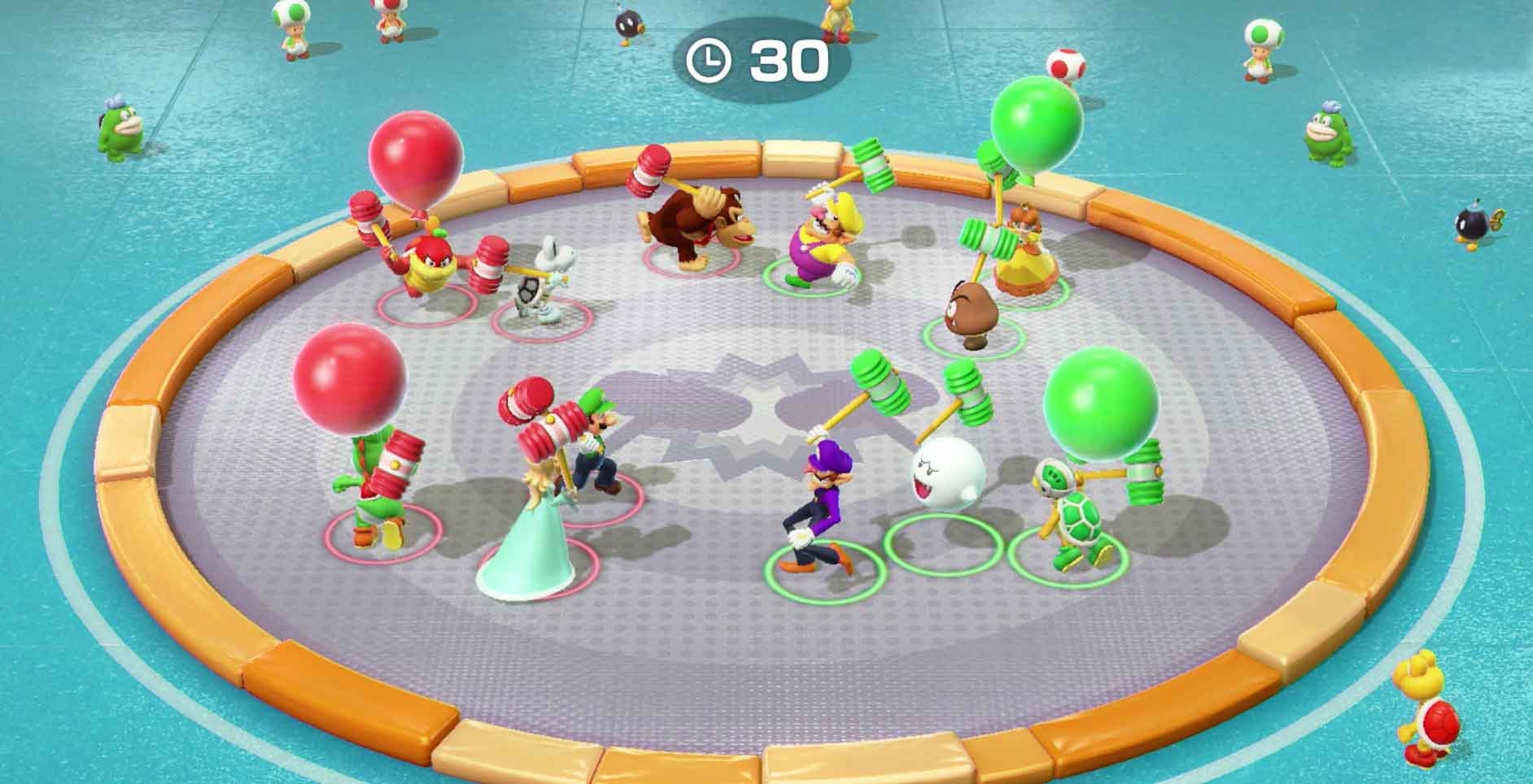Super Mario Party is shaping up to be the return to form fans have wanted for years. You can wave goodbye to those pesky cars from Mario Party 10, as the classic board game is indeed back with some new tricks up its sleeve.
Sitting down with two other journalists and a member of the Nintendo team, we were shown a new beach-themed level, called Megafruit Paradise, and set up for a classic round of Mario Party. Toadette’s now the star holder in Super Mario Party, and, much like in previous games, will move randomly around the board after a player collects a star (which will cost you 10 coins).
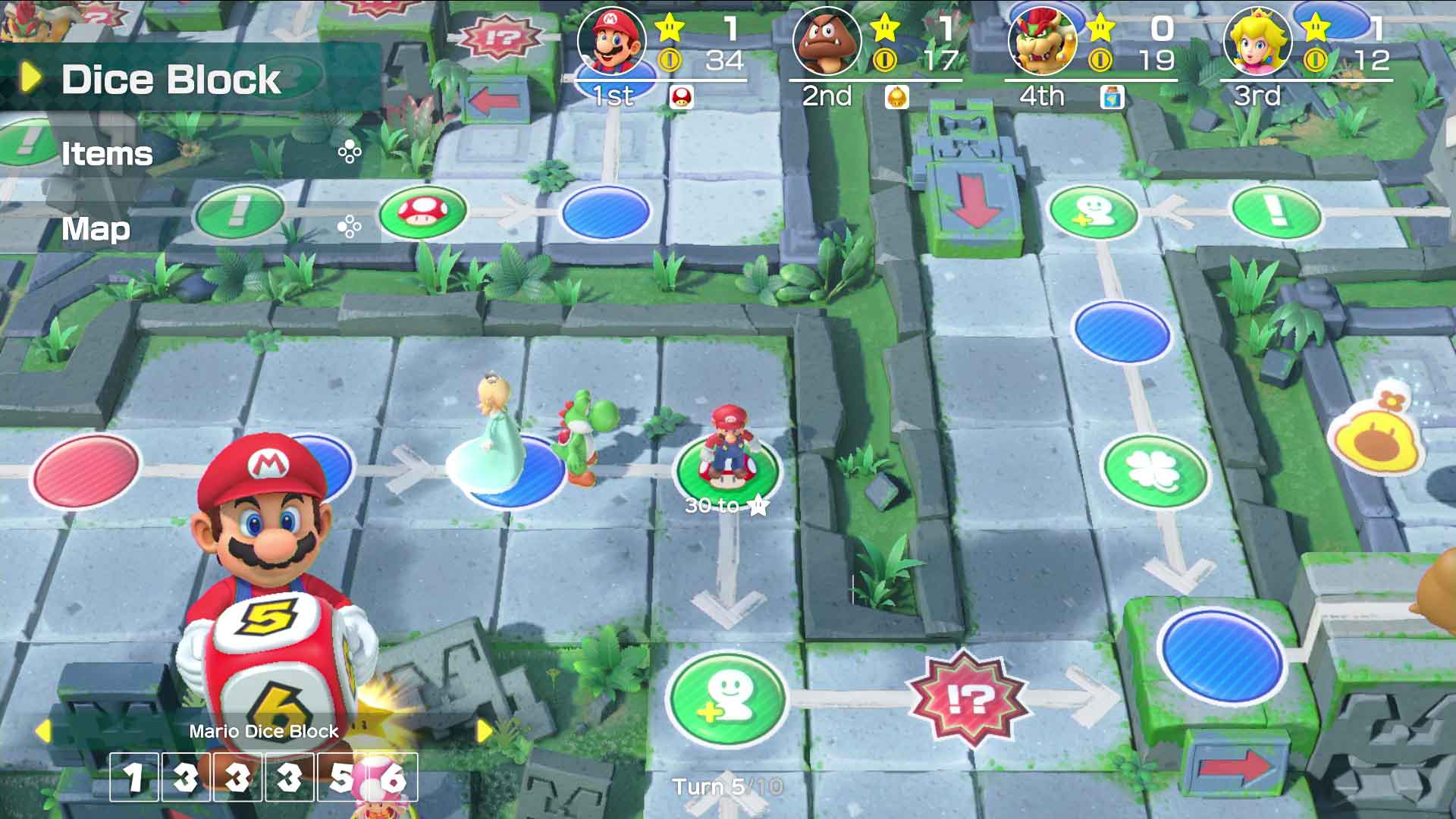
Of course, getting to her is, as always, going to prove tricky. The board we played on was separated into two different areas, with traversal via pipe the only way of accessing the other side of the board and vice versa. In a classic strike of luck, I was the first to find myself on the wrong side of the board and ended up staying there for the majority of the game, in turn alienating myself from grabbing that pesky star.
After the end of each turn you’ll be thrown into a mini game, which range from free-for-alls to 2v2s and 3v1s. Everything’s random in terms of how a player is selected for the mini games, and I was lucky enough to never be thrown into a 3v1 situation during my hands-on time (though to be fair, the position I was in on the board was bad enough).
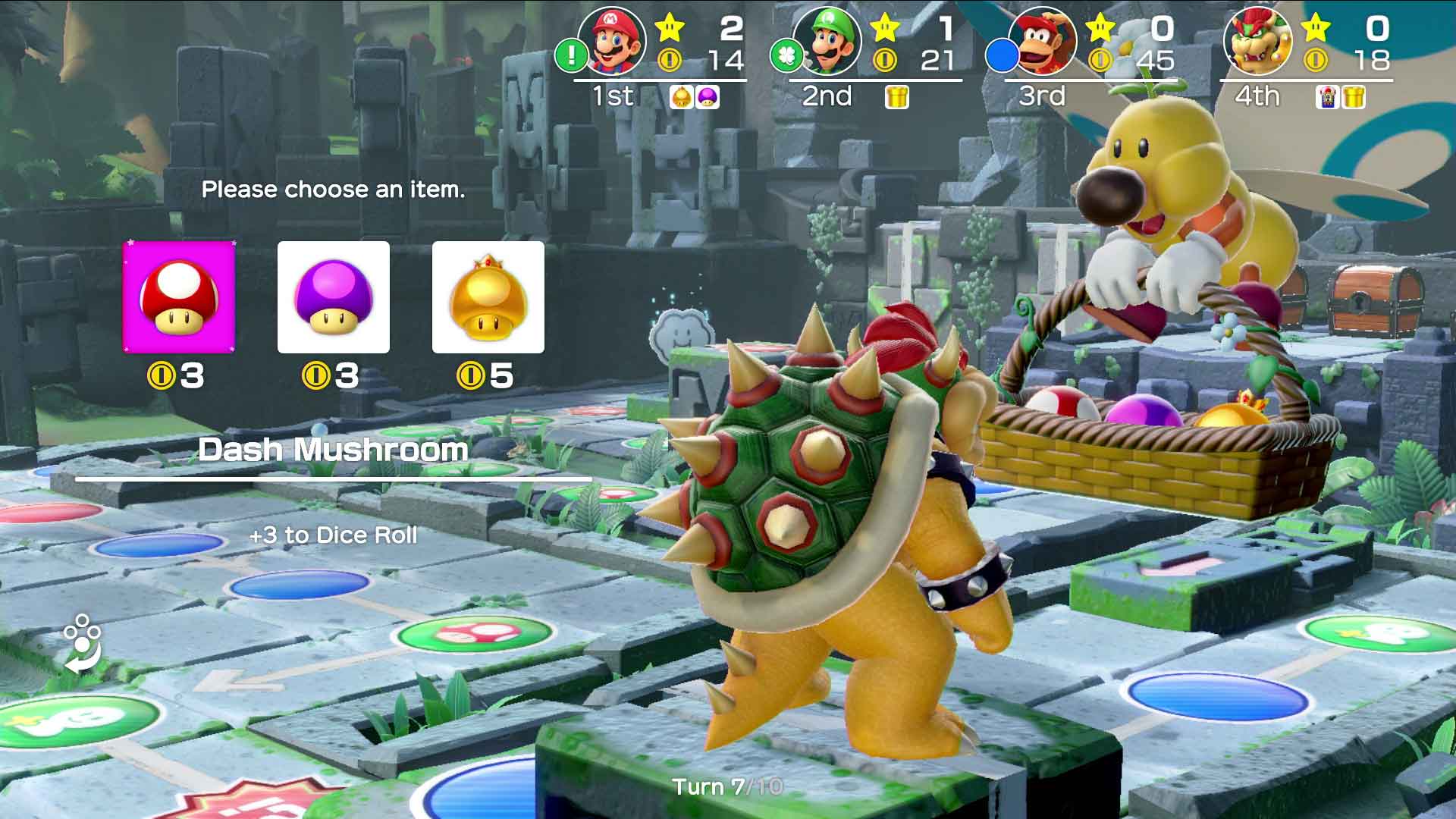
We played through a range of different mini games, with one of my personal highlights called What A Racquet — a 3v1 game of badminton that had three smaller players with normal-sized tennis racquets taking on a sole player with a giant tennis racquet. The aim of the game was to smash as many Bob-ombs (with parachutes) over to the other team’s side of the court right before they blew up, which would earn you a point. Sadly, our three-person team struggled to co-operate and we ended up narrowly losing.
Smash and Crab, another great 3v1 mini game we tried out, had two players controlling giant crab mallets and the third player controlling the crab’s horizontal movement. The aim of the game was for the three-person team to squash the sole player on a platform in front of the crab, who had to attempt to dodge the mallets. It took all of two seconds for us to win, but I can see this game being an absolute blast at parties.
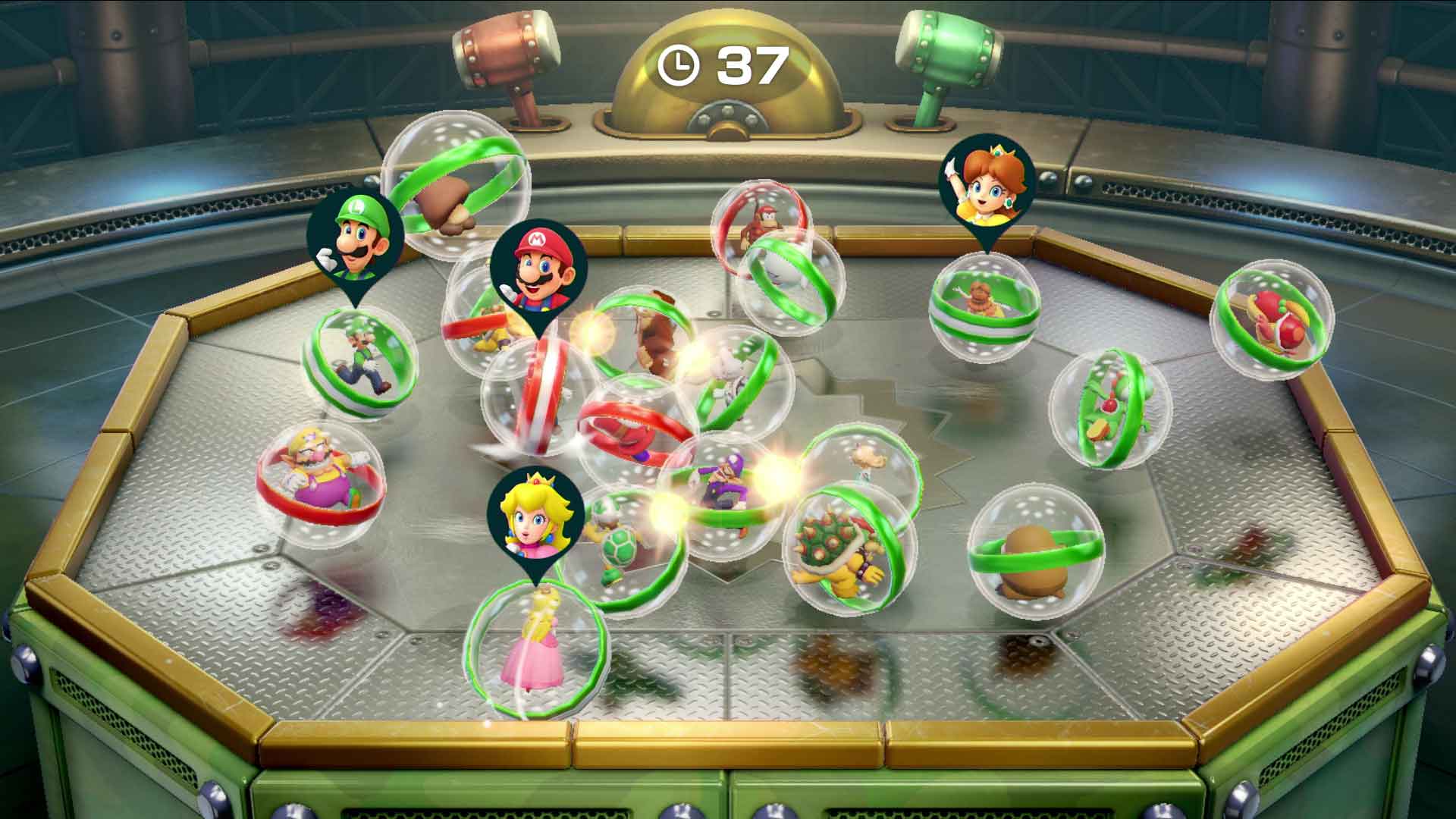
It’s worth mentioning that each character has their own specific die that they can use on the board now as well, giving you an option between a normal die and a character-specific one. The latter has some special permutations to it — like taking 2 coins from your stash or letting you go ahead 9 spaces — so there’s an element of risk versus reward with going that route. I was told that character-specific die will change depending on the board you play on, too, so it’ll be interesting to see how that plays out.
After 25 minutes of time on Megafruit Paradise and playing classic Mario Party, it was time to kick on to Super Mario Party’s newest mode: River Survival.
Rather than pushing for competitive play, River Survival is instead all about co-operation and teamwork. This quickly became evident as all four of us were bucketing down a river together on a raft, each with a paddle in tow. To navigate the river, we all had to communicate and row in sync with motion controls, so communication — from the off — was integral to success. If we wanted to turn right, we’d need the two people on our left to row, whereas to turn left it was the opposite. I really liked this, and found it a nice way of breaking up the competitive stress of the board game we’d just played… until we reached the first mini game.
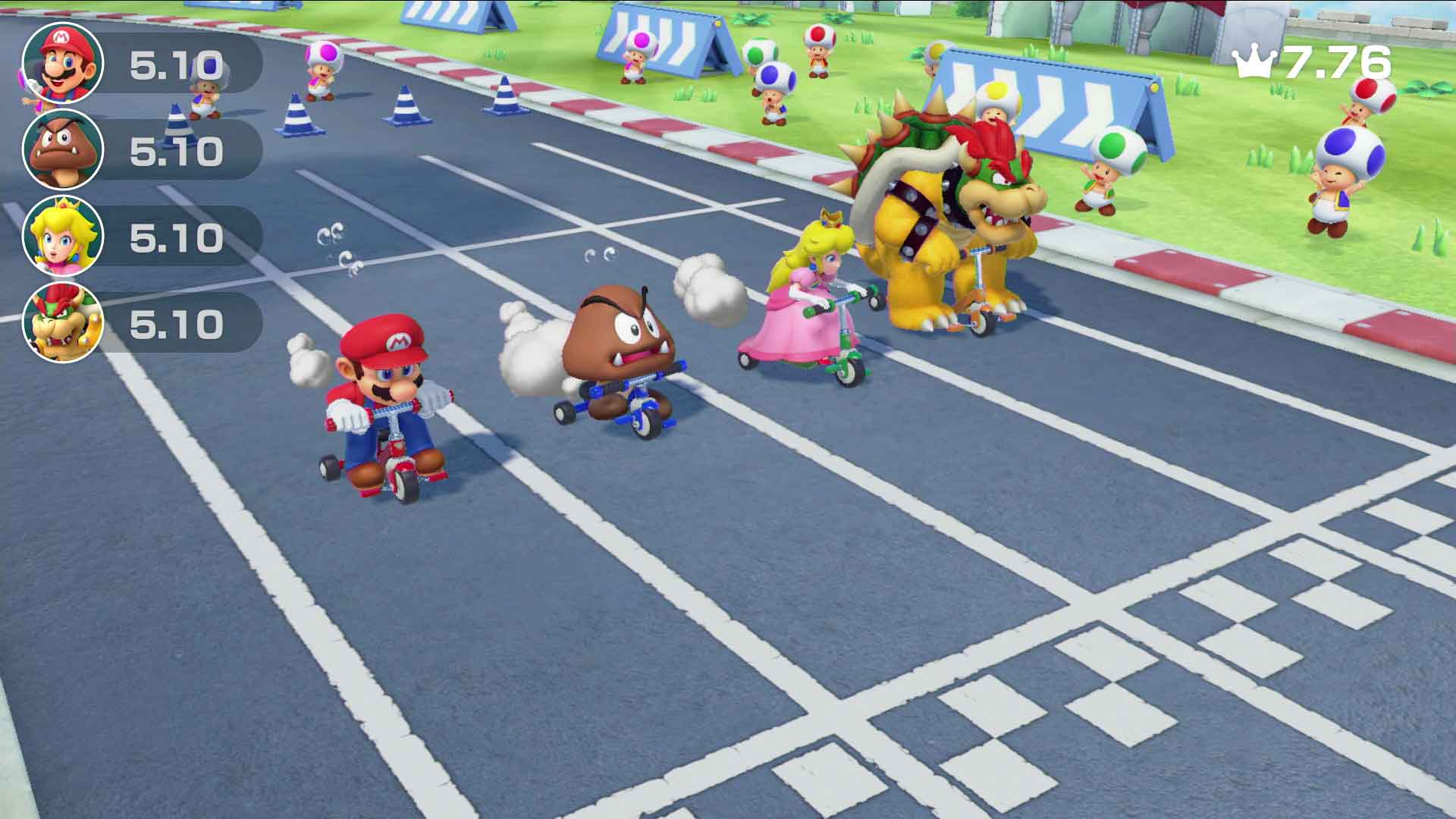
Called Net Worth, this mini game saw us having to communicate as a team to operate a net and capture fish swimming through a river. The more fish we caught, the more points we’d get. Everyone needed to swing their Joy-Con up at the same time in order for the net to come up and toss the fish into our bucket, though, and so once again communication was critical. We didn’t do too bad in Net Worth, and the co-operative nature of it all was enjoyable.
Time plays a key role in River Survival, and having the timer run out will result in a game over. Playing mini games, however, will give you more time, and a good rank in a mini game (which range from S to C depending on how well you and your team do) will give you a time bonus.
My favourite mini game in River Survival that I played was called Isthmus Be The Bomb, which had us co-operating together to carry fireworks to a cannon. Given it’s a co-op game, the spin here is that each player has to carry the fireworks through a perilously windy road — which is just wide enough to hold your character — and hand it off to the next person, relay style. Each character would walk a part of the track while other players would watch on, leading to some serious tension as we approached the finish line. Team-based mini games like this one, which involve all four players working together, seem like they’ll be a great way of breaking up the core gameplay modes that will be in Super Mario Party, and I’m really keen to play more of it come launch later this year.
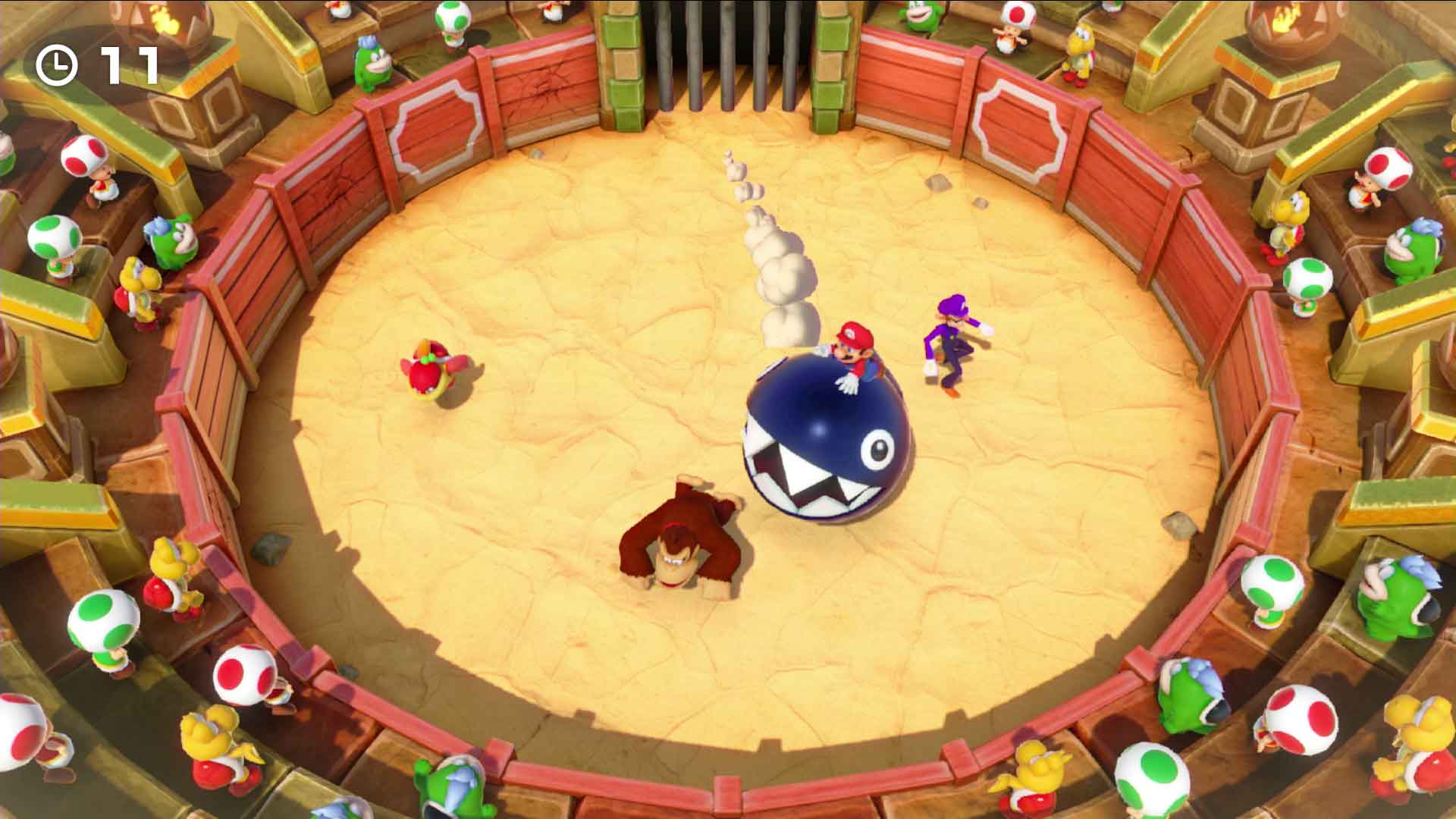
Our final part of the hands-on demo was giving Toad’s Rec Room a crack, which requires two undocked Switches to work and a copy of the game for both consoles. We got to try out two already announced games in this mode, which were Shell Shock Deluxe, a 2v2 tank mini game that saw us linking the Switches together to create battlefields, and Banana, Split, which had us linking unfinished images of bananas together via both consoles.
The latter was no doubt the better of the two, and resulted in a small time-based competition between the three of us playing. As you linked more banana images together, constantly turning the Switches in a multitude of different angles in order to match them, the mode would add in more bananas to throw you off and make things difficult. It was stupidly fun, and works tremendously well between the two Switches. Joining the bananas only required a line drawn across the Switches with your finger to join them up, and then it was on to the next part of the level.
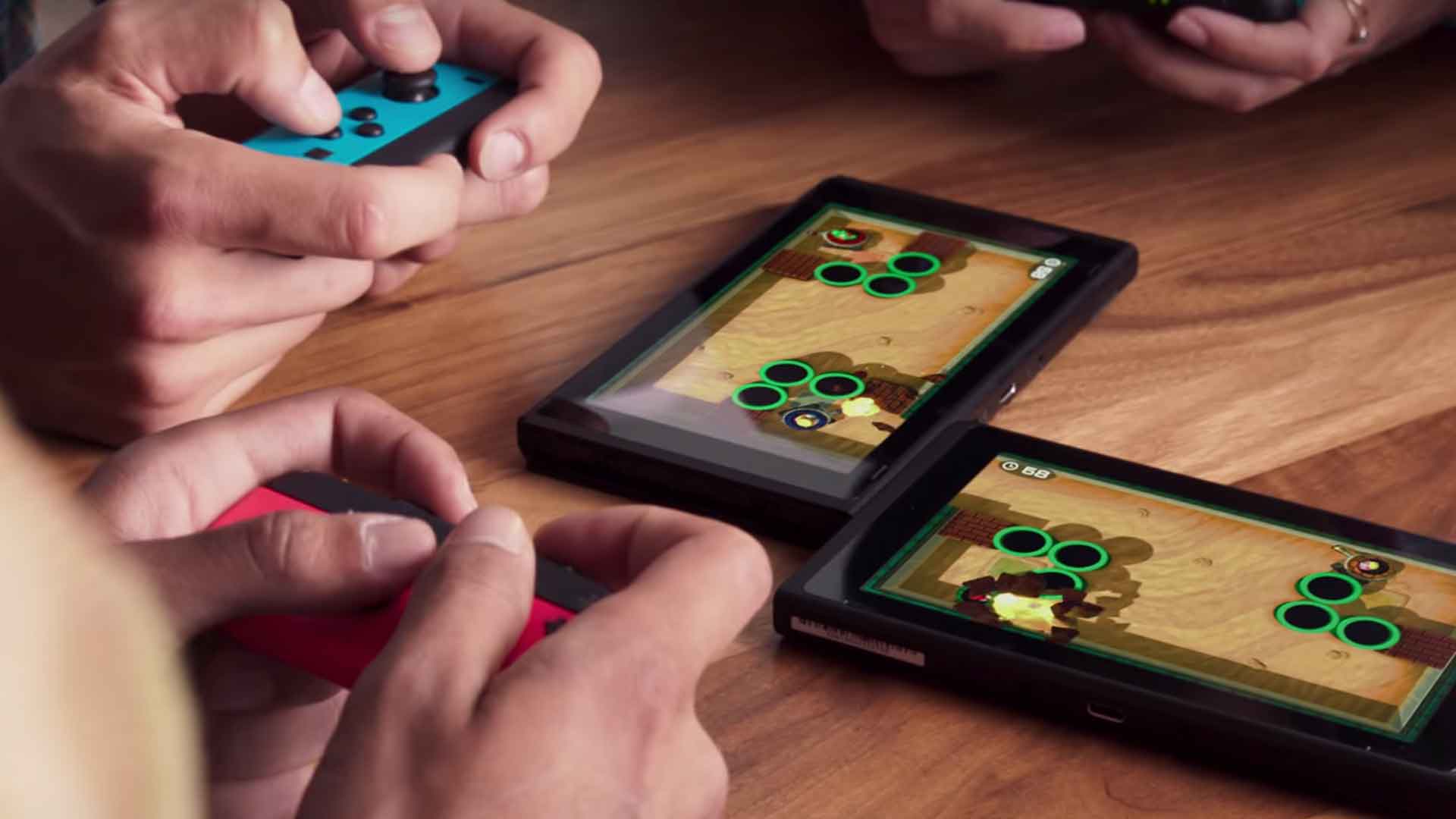
This kind of tech really separates Super Mario Party from the other party games out there on the system, and, combined with the other modes I played, is putting together a package that is as diverse as it is enjoyable. The Toad’s Rec Room games aren’t part of the 80 included mini games that form most of Super Mario Party either, which means there’ll be plenty of new things to play for a while.
I have very little complaints in relation to my time with Super Mario Party, and think the game is shaping up to be something really, really great. It’s been a long time since we’ve had a great Mario Party game, and after an hour of hands-on time I’m beginning to think we might just be set for the best one yet. That said, I am slightly concerned as to how the single player will go, though that has always been a weak point of the series in general. For now, if you have a group of friends keen on some Mario Party action, Super Mario Party should well and truly be on your radar.
Super Mario Party lands on Nintendo Switch on October 5.


